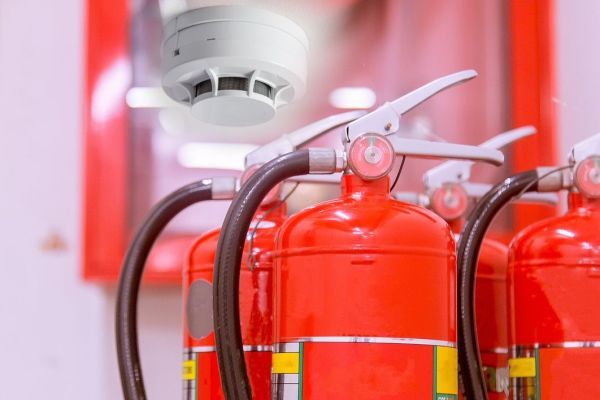Blog
Workings of a Fire Alarm Control Panel

A fire alarm control panel is the central hub of the fire detection and notification system. It is an essential component of any fire protection system, responsible for monitoring and managing multiple devices spread across a building or facility. Understanding the inner workings of a fire alarm control panel is crucial for effective fire safety management. This article explores the basic functioning of a fire alarm control panel and sheds light on its role in safeguarding lives and properties.
The Core Components
A fire alarm control panel is the central hub of the fire detection and notification system. It is an essential component of any fire protection system, responsible for monitoring and managing multiple devices spread across a building or facility. Understanding the inner workings of a fire alarm control panel is crucial for effective fire safety management. This article explores the basic functioning of a fire alarm control panel and sheds light on its role in safeguarding lives and properties.
The Core Components
A fire alarm control panel has several essential components that work seamlessly, which include:
Monitoring and Alerting
Continuous monitoring is one of the primary functions of a fire alarm control panel. It constantly receives updates from detectors and sensors, ensuring prompt detection and response to potential fire incidents. When a signal indicating a possible fire is received, the control panel analyzes the information and determines the appropriate action.
Zone Control and User Interface
A fire alarm control panel organizes the monitored areas into zones, allowing for the accurate location of a fire occurrence. This division enables responders to navigate the premises and take targeted action swiftly. Furthermore, control panels offer intuitive user interfaces that provide real-time status updates, event logs, and control options. Authorized personnel can use these interfaces to monitor the system's performance, perform maintenance tasks, and customize settings as required.

Integration and Expandability
Fire alarm control panels are designed to be flexible and expandable, allowing integration with other fire protection and security systems. They can be interconnected with sprinklers, emergency lighting, HVAC, and access control systems. This integration enables a comprehensive approach to fire safety, ensuring a coordinated response to emergencies and minimizing false alarms.
Conclusion
General International Group offers cutting-edge fire alarm control panel solutions in East Africa. Our state-of-the-art systems are designed to meet international fire safety standards and provide reliable protection for lives and properties. With our advanced technology and expertise, we ensure prompt and accurate fire detection, timely alerts, and effective emergency response. Trust General International Group for comprehensive fire safety solutions tailored to your particular needs.
-
- Detectors and Sensors: Fire detectors and sensors are strategically installed throughout a building to monitor changes in temperature, smoke, or the presence of gases associated with fire. These devices transmit signals to the control panel when they detect potential fire hazards.
- Input Modules: Input modules act as the communication link between detectors/sensors and the control panel. They convert the signals these devices receive into a digital format that the control panel can interpret.
- Control Panel: The control panel itself is the heart of the fire alarm system. It receives information from the input modules, processes it, and initiates the appropriate response based on pre-programmed settings. This response can include activating alarms, notifying emergency services, and activating evacuation protocols.
- Alarm Activation: Upon identifying a fire hazard, the control panel activates various alarm devices, such as horns, strobes, or sirens, to alert building occupants. These audible and visual alarms are critical as they promptly notify individuals of the potential danger, enabling them to take the necessary evacuation measures.
- Notification: Modern fire alarm control panels are equipped with advanced communication capabilities. They can transmit alerts to remote monitoring centers, emergency services, and designated personnel via SMS, email, or other communication channels. This feature ensures that the appropriate authorities are swiftly notified, facilitating a rapid response to the emergency.